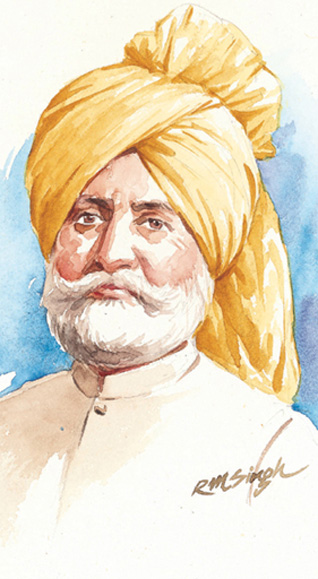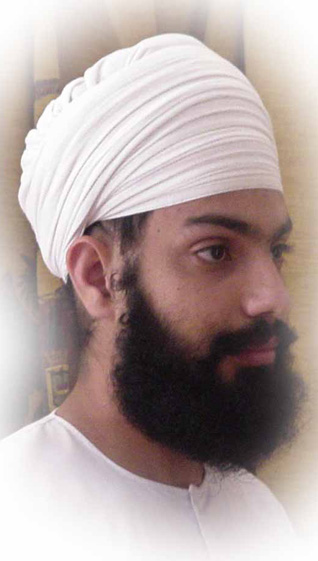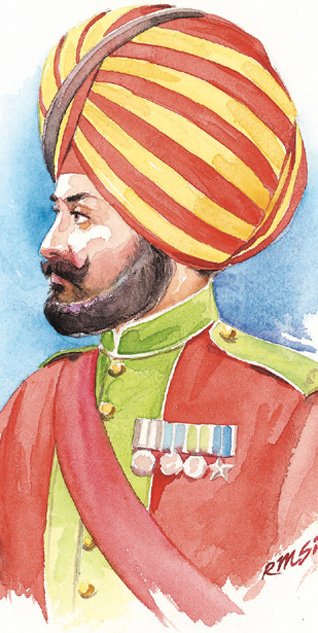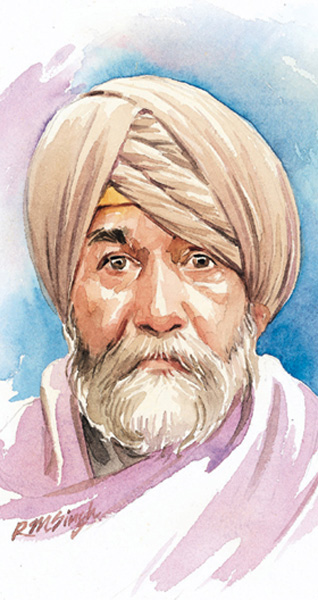History
This Needs Research - IV:
What Are The Different Styles Of The Sikh Turban?
T. SHER SINGH
EDITOR’S PREFACE: We live at a time when all the tools are at our disposal to do excellent research and make serious inroads into areas of Sikh history and thought which have hitherto been neglected.
There are good men and women around the world who have dedicated their careers to Sikh Studies and have both the independence and the resources to turn their attention to important questions which remain either unanswered to date or remain vague in the fog of time.
This is the fourth in a new series on sikhchic.com wherein we will attempt to pose some of these questions which come to mind, hoping that those entrusted with the mantle of scholarship will then find them worthy of attention, if they aren‘t already being delved into.
We invite readers to share with us any questions or areas of interest which intrigues them as deserving new or continuing research, and also explain briefly why such fields should be explored.
Today’s question: “What are the different styles of the Sikh Turban?”
* * * * *
The Sikh Turban is unique not only in its style but also in its seminal significance to a complete Faith system.
Though neat and easily identifiable as distinctly different from any other worn anywhere or by any other community -- it was the headgear worn by virtually every ethnic and religious group throughout history -- it too has a variety of different ways in the way it has been worn by Sikhs.
The variance has been nurtured by ethnicity and geography, culture and tradition, climate and history.
In the fast-changing world we live in -- especially one in which the film screen, television and the internet shape everything we do -- traditions quickly fall by the wayside, giving way to popular trends and fashions. Which, vis-à-vis the Sikh turban, translates into a gradual disappearance of many of the old styles and mores of turban-tying.
Before scores of them completely withdraw from public memory, we need to record the rich panoply for posterity. What, how, who, where, when … the details of each style and local fashion should be studied, analyzed, photographed, catalogued and made easily available to our future generations to see how we have evolved through our youthful history.
Surely we have no dearth of talented and curious photographers, anthropologists, cultural historians and archivists, who would love to take on this project and scour the Punjabi countryside on both sides of the border, and go far beyond, particularly all the places where Sikhs have historically made their home, even those which no longer boast Sikh populations.
The grand coffee-table book format could do full justice to the subject, covering maps of regions, old photographs and new, sketches and paintings, fabrics, jewellery, colours, and local lore. The literature: poetry and prose, fiction and non-fiction. The treasure in songs and dances!
The Kabuli turban. The Namdhari. The North-West Frontier, with the shamla. The pharla, the turla and the turra. The Patiala-shahi. The Nihang ’fortress’. The old keski and the new female versions. The dumalla. The East African. Patohari. Multani. Doaba and Malwa. Kashmiri. Pashori (Peshawar). The Maharaja's cotton crown. The warrior’s and soldier’s - changing from each Great War to the next. The tartan. The military ceremonial. The quick round ‘sant’ wrap-around. Taksali. The patka. Nok wali. Single patti and double. The whole range of new trends and fashions, including the absurd and the bizarre, the 'space-craft' and the 'flying-saucer'.
Let’s not forget the chhoti puggri and the fifty ... And the rumal.
Questions: such as ... Is there a difference between the puggri (‘pugh‘) and the dastaar?
The signifance of the colours? The Akali blue and the black, the martyr’s saffron, the seniors’ white and the bride-groom’s pink. The magnificent prints and the embroidered ones. The multi-layered and the sculpted.
And ah yes, the fabrics. The ubiquitous mulmul, the khaddar (home-spun), voile, silk, rubia, banarasi, organdy, organza …
Let’s not forget the kalgis and the whole gamut of ornaments, ranging from the wedding variety to the truly princely.
And, of course, the manner of grooming it, washing and drying it, dyeing it, preparing it, and tying it: maya (starch) or not, pooni, folded. And, then, storing it.
How did your father tie his turban? Your grandfathers? And before them?
There’s so much to record, conserve and preserve for our children. It’s bound to be a lot of fun doing it.
December 21, 2016 [90 days to Spring!]
Conversation about this article
1: Sandeep Singh Brar (Canada), December 21, 2016, 12:37 PM.
As a historian and photographer, I would love to work on a project like that. What fascinates me the most is the early turban styles of the 18th and early 19th century under the Lahore Empire. We have no living memory of how those turbans were tied.
2: Rupinder Singh (Panchkula, India), December 21, 2016, 1:53 PM.
Bernard Cohn has a great article on the Sikh turban that deserves reading, called "Cloth, Clothes, and Colonialism" in his book "Colonialism and its forms of Knowledge."






